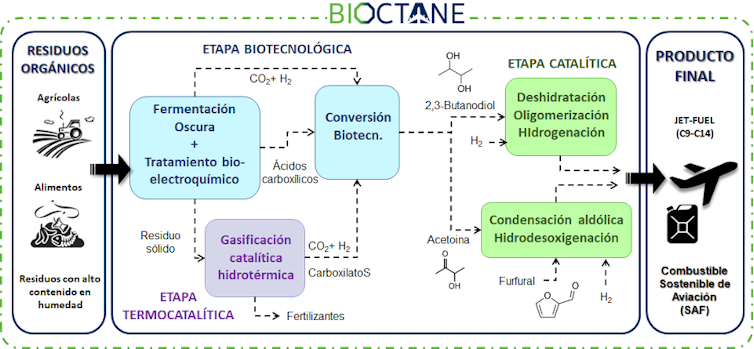The challenges of reducing emissions from aviation and conversion of organic waste to SAF
In 2021, the European climate law was passed in the full conviction that urgent action is needed to preserve the future of our next generations. This law means that combating climate change is no longer a commitment but a legal obligation. It sets 2050 as the deadline for achieving climate neutrality, i.e. zero net greenhouse gas emissions.
As an intermediate target to help achieve this ambitious goal, emissions in the European Union must be reduced by at least 55% by 2030 compared to 1990. To this end, a set of climate and energy actions have been proposed in the so-called Target 55 package.
The measures include, among others, the promotion of renewable energies and energy savings, payment for CO₂ emissions, the use of electric vehicles and the consumption of fuels with a lower environmental impact.
The transport sector in the spotlight to combat climate change
Fossil fuel consumption in the transport sector is one of the main causes of greenhouse gas emissions. It is estimated to produce a quarter of emissions in the European Union and a fifth of global emissions. This is why the Objective 55 package includes specific measures to achieve more efficient and sustainable transport.
But not all types of transport can adapt with the same ease and speed. Replacing fossil fuels with electric power or hydrogen is already a reality for road transport vehicles. However, in the case of maritime and, above all, air transport, these technological alternatives are much more difficult to implement.
The most viable options in the medium term come down to the use of liquid fuels that are sustainable.
Making aviation fuel sustainable
Sustainable aviation fuels, also known as SAF (sustainable aviation fuel), are the main bet to decarbonize the aviation sector.
SAFs are liquid fuels obtained from organic waste of biological origin (biofuels or bio-jet) or from carbon dioxide captured from the air and renewable hydrogen (synthetic fuel or e-jet).
In both cases, their combustion in turbine engines releases CO₂, but in quantities equivalent to those consumed directly or indirectly during the manufacture of the fuel. According to the International Air Transport Association (IATA), the PAS currently used in commercial flights can reduce CO₂ emissions by up to 80 %.
Roadmap for implementing UAS in the EU
European guidelines to mitigate the environmental impact of the aviation sector are contained in the Refuel Aviation regulation, setting out these obligations:
- Fuel suppliers must progressively increase the percentage of PBS introduced (preferably synthetic type) in their formulation. By the year 2050 this percentage must be 70 %.
- Airlines should refuel only the amount of fuel required for the route to be flown. This will prevent excess emissions caused by overfueling.
- Airports must ensure that the necessary infrastructure is in place for sustainable refueling activities.
The BIOCTANE project
Although the guidelines are clear, the main challenge in meeting the objectives of the Refuel Aviation regulation is the current low production capacity of PBS. In addition, the type of fuel manufactured cannot be injected pure because it does not meet the technical specifications on its own, but must be blended with fuel of fossil origin.
In November 2022, we started the BIOCTANE project funded by the Horizon Europe program, with the aim of exploring a new sustainable route for the production of PBS. The project is led by IMDEA Energia and involves a total of six European research organizations.




